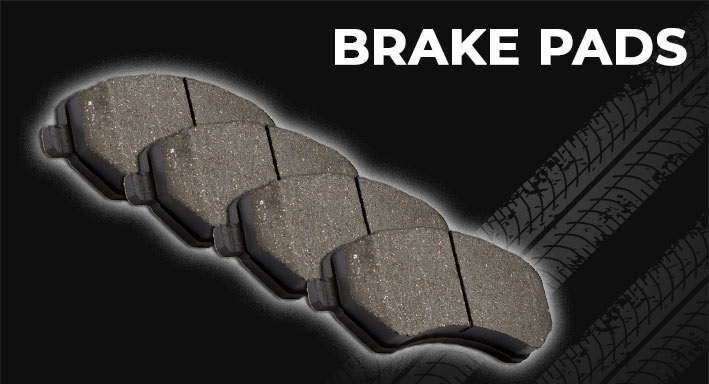When it comes to vehicle safety and performance, car brake pads play a crucial role. They are essential components of your car’s braking system, ensuring that you can stop effectively and safely when needed. Understanding the importance, types, and maintenance of brake pads can help you make informed decisions to keep your vehicle running smoothly.
This comprehensive guide covers everything you need to know about car brake pads.
The Importance of Car Brake Pads
Brake pads are vital for the safety and performance of your car. They work by pressing against the brake rotor to create friction, which slows down and stops the vehicle. Without properly functioning brake pads, your car would not be able to stop efficiently, putting you and other road users at risk.
Types of Brake Pads
There are several types of car brake pads available, each with its unique characteristics and benefits. Here’s an overview of the most common types:
- Organic Brake Pads
- Material: Made from a blend of natural materials like rubber, glass, and Kevlar.
- Advantages: Quiet operation and affordability.
- Disadvantages: Wear out faster and produce more dust.
- Best For: Daily driving and small cars.
- Semi-Metallic Brake Pads
- Material: Composed of metal fibers mixed with friction materials.
- Advantages: Durable, effective at high temperatures, and provide good stopping power.
- Disadvantages: Noisier and can cause more wear on rotors.
- Best For: Performance vehicles and heavy-duty applications.
- Ceramic Brake Pads
- Material: Made from ceramic fibers and other filler materials.
- Advantages: Long-lasting, produce less dust, and operate quietly.
- Disadvantages: More expensive than other types.
- Best For: High-performance vehicles and luxury cars.
- Low-metallic NAO Brake Pads
- Material: Made with an organic compound but include a small amount of copper or steel.
- Advantages: Good heat transfer and braking performance.
- Disadvantages: This can be noisier and produce more dust.
- Best For: General use with a slight performance edge.
Signs Your Car Brake Pads Need Replacing
It’s essential to recognize the signs that your brake pads need replacement to ensure continued safety and performance. Here are some indicators:
- Squeaking or Squealing Noises: Often caused by the wear indicator on the brake pad.
- Grinding Sound: Indicates that the brake pad is worn down completely, and metal is rubbing against metal.
- Vibration or Pulsation: This can be felt in the brake pedal and may indicate uneven wear or warped rotors.
- Longer Stopping Distances: A clear sign that your brake pads are not providing sufficient friction.
- Brake Warning Light: Some vehicles have sensors that trigger a warning light on the dashboard when pads are worn.
How to Check Your Brake Pads
Regular inspection of your brake pads is crucial. Here’s a simple guide on how to check them:
- Visual Inspection: Look through the wheel spokes to see the brake pads. If they appear thin (less than a quarter inch), it’s time for a replacement.
- Listen for Noises: Pay attention to any unusual sounds when braking.
- Feel the Brake Pedal: Any changes in the feel of the brake pedal, such as it being softer or harder than usual, could indicate worn brake pads.
Maintenance Tips for Car Brake Pads
To ensure your car brake pads last as long as possible and perform efficiently, follow these maintenance tips:
- Regular Inspections: Check your brake pads regularly, especially if you hear noises or notice a change in braking performance.
- Smooth Driving: Avoid sudden stops and heavy braking when possible. This reduces wear on the brake pads.
- Brake Fluid Check: Ensure your brake fluid is at the correct level and replace it according to your vehicle manufacturer’s recommendations.
- Professional Servicing: Have your brakes inspected and serviced by a professional mechanic at regular intervals.
Choosing the Right Brake Pads
Selecting the right brake pads for your vehicle depends on your driving habits, vehicle type, and performance needs. Here are some considerations:
- Driving Conditions: If you frequently drive in heavy traffic or mountainous areas, opt for pads that can handle higher temperatures and provide excellent stopping power.
- Vehicle Type: Ensure the brake pads are compatible with your vehicle’s make and model.
- Performance Needs: For high-performance vehicles, ceramic or semi-metallic brake pads are ideal. For daily driving, organic pads might suffice.
Conclusion: The Role of Quality Car Brake Pads
Quality car brake pads are essential for the safety, performance, and longevity of your vehicle. By understanding the different types of brake pads, recognizing the signs of wear, and following proper maintenance practices, you can ensure that your car stops effectively and safely. Whether you’re a casual driver or a performance enthusiast, choosing the right brake pads is crucial for optimal vehicle operation. At motrparts.com, we offer a wide range of high-quality car brake pads suitable for various vehicles and driving needs. Our expert team can help you select the best brake pads to ensure your vehicle remains safe and performs at its best.

